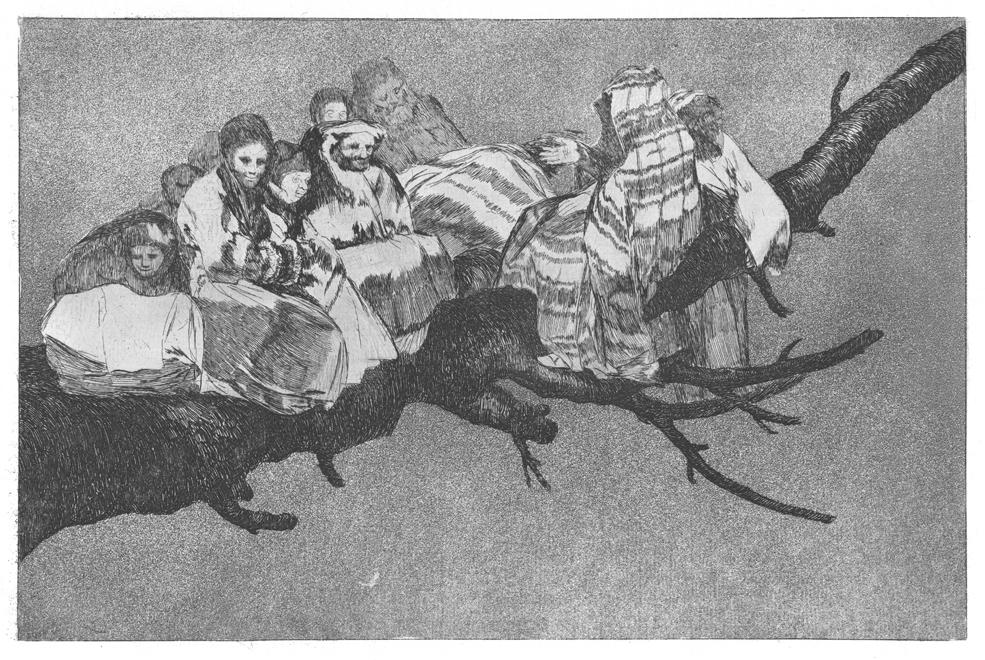
Te Follies, also known as Proverbs (in Spanish Los disparates or Los proverbios) are the most enigmatic and disturbing of all Goya’s prints. Created between 1815 and 1823, at the same time as Goya was covering the walls of his farmhouse with the Black Paintings, it was not considered safe to publish them at the time. Goya went into exile in 1824, leaving the plates behind.
How Goya intended to present the series, or even how many prints it was to have had, is not known. It seems that at least 25 images were planned, and drawings survive for 15 of these, and for a further 6 that were not used. Some early proofs bear the title in the artist’s hand, usually starting with the word Disparate.
In 1856 the Royal Academy of Fine Arts of San Fernando, Madrid, acquired 18 of the plates, and published them in 1864, under the title of Los proverbios. A further four were published in Paris in 1877.
All 22 prints are reproduced here, at slightly larger than ⅔ of the size of the originals.
Francisco José de Goya y Lucientes was born in 1764 in the province of Aragón. After a glittering career as a court painter, he retired to his house in the country outside Madrid, known as Te House of the Deaf Man.
Although his prints were not commercially successful in his lifetime, they are now considered amongst his greatest works. He made three series before Los disparates: Los caprichos (Te Caprices), 1797-98; Los desastres de la guerra (Te Disasters of War, 1810-20); and La tauromaquia (Bullfghting, 1820).
In 1824 Goya left an increasingly repressive Spain to live in Bordeaux, where he died in 1828.


Opening page of the frst edition, published under the title Los Proverbios (Proverbs)






